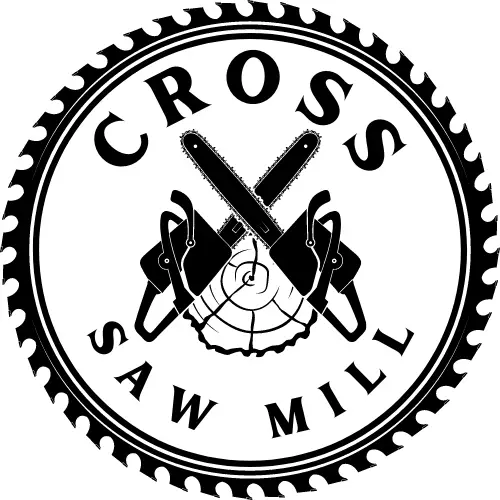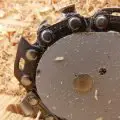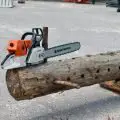When you need to complete specific jobs in the yard, having a chainsaw will come in handy. You most likely use your chainsaw for a variety of tasks, such as removing fallen branches or cutting firewood. Even if you adore your chainsaw, it can be aggravating when the blade becomes dull. Some people even believe that their blades are dulling faster than they should.
Chainsaws should be sharp in order to cut through wood without difficulties. A dull chainsaw not only reduces its efficiency but also damages the chainsaw. As a result, it is critical to understand why your chainsaw becomes dull so quickly.
In this article, we will explain the reasons why a chainsaw chain dulls quickly, how to fix it, as well as signs to help you identify a dull chainsaw.
Table of Contents
- Why Does My Chainsaw Chain Dull so Quickly?
- How to Identify a Dull Chainsaw Chain
- FAQs (Frequently Asked Questions)

Why Does My Chainsaw Chain Dull so Quickly?
- Constant use
- A steep angle on the cutters
- Cutting dirty trees/wood
- Strong or metal objects in the wood
- Certain types of trees are hard on chains
- Rakers are too far down
- Chainsaw chain sharpening issues
- Accidentally touching the ground with the chainsaw bar tip
Constant Use
The first thing to realize is that regular use will dull any blade. Even if you sharpen and maintain your blades properly, they will inevitably dull at some point. You should expect the chainsaw to dull if you use it frequently. No matter what you do, it will not remain sharp permanently.
Knowing this, you can anticipate that some objects will dull the chainsaw blade faster than others. Particularly difficult jobs may lead the blade to dull faster than in regular jobs.
You might not think you’ll need to sharpen your blade so soon because you have just sharpened it. Or, you may not have tracked how frequently you used the chainsaw blade during the day’s tasks.
This isn’t to say that there aren’t other factors that could be causing the blade to dull more quickly than usual. It’s just that folks frequently lose sight of how much they’re actually using the chainsaw.
Steep Angle on the Cutters
Did you realize that the angle of the cutters can affect how quickly the chainsaw blade dulls? The best sharpening angle is usually between 25 and 35 degrees.
Of course, there are some distinctions based on what you intend to accomplish with the saw blade. If you’re attempting to cut anything extremely difficult, you’ll need to use a greater angle.
Optimal sharpening angles might also vary depending on the type of blade you have. In general, you should consult the chainsaw’s owner’s manual for guidance.
If you happen to have misplaced the handbook that came with your chainsaw, you should be able to retrieve the model number that you own online. Make every effort to get the sharpening angle just right so that you don’t dull the chainsaw blade too quickly.
Cutting Dirty Trees/Wood
Another consideration is that cutting filthy wood may cause the chainsaw blade to dull faster. Is the wood you’re cutting with the chainsaw especially filthy? Many chainsaw fans have noticed that cutting muddy wood causes their blades to dull faster. Perhaps the only cause of the problem is that the logs you’re sawing up are muddy.
It won’t be difficult to tell whether the wood you’re cutting is dirty or not. Why does dirt dull a chainsaw? It can grind against the blades and cause them to deteriorate. Dirt and muck can contribute to the dulling of your blade. When cutting filthy wood, it’s normal to expect this to happen a little faster than usual.
Try to avoid cutting dirty trees/wood if and when possible. Make cuts through the cleanest part of the tree/wood where doable.
Strong or Metal Objects in the Wood
This may seem unusual to you, but the wood you are cutting may contain an object stuck inside it. This could be a metal fragment or a nail. You’re wondering how an object like that got into the timber or tree you’re attempting to cut down.
Nails, for example, are frequently nailed into trees or woodlands to erect signposts, or while building a birdhouse or a treehouse for children. Regardless of how the object got into the wood or tree in the first place, it can cause your chainsaw to become instantly dull.
Inspect the piece of wood before making a cut to locate any potential objects in the wood. Using a plier to pry out the nail is one effective approach to handling such issues. However, the most natural answer is to either cut from a different point or discard the wood entirely.
Certain Types of Trees Are Hard On Chains
It should come as no surprise that certain types of wood are more difficult to cut with a chainsaw than others. You’ve probably heard that cutting through strong wood can dull your chainsaw blade just like cutting through dirty wood.
Maple, for example, is a wood that is known to be difficult on chainsaw blades. You can cut it nicely, but it will dull your blade faster than many other species of wood.
Chainsaw blades are also known to be difficult on hickory, ironwood, and hedge apple. After cutting through this type of wood, you may need to sharpen your blade. Larger jobs will wear out your chainsaw blade faster than smaller jobs.
You can’t anticipate the chainsaw blade to dull at the same rate every time because you’re probably doing different tasks that take a different toll on the blade’s sharpness.
Visit our Firewood Identification guide to learn more about all the various types of trees!
Rakers Are Too Far Down
Simple things like having the rakers too far down could contribute to the blade dulling quickly. If you notice that the chainsaw blade is dulling much faster than intended, it’s worth investigating.
Setting the rakers higher may allow you to use the blade for extended periods of time before it becomes dull. People frequently set things too low without recognizing it and only remedy the mistake when they have difficulty keeping the blade sharp.
If you’re certain that you’ve placed the rakers to the right height, the problem could be something else entirely.
Chainsaw Chain Sharpening Issues
You could just be sharpening your chainsaw incorrectly, resulting in less-than-ideal outcomes. People who are new to owning and maintaining chainsaws frequently do not know how to properly sharpen the blades.
This does not imply that you are not sharpening the blade, but that you are not sharpening it as well as you could. For example, you could be employing the incorrect file size, which could be causing issues.
People will sometimes employ dull files without even recognizing them. As a result, the chainsaw blade may not be sharpened as much as it should be. Check your user guide to confirm you’re using the correct-sized file for your chain. Alternatively, you could be filing with too much pressure. This results in cutting edges that are overly thin and rapidly dull.
More information on file sizes is in our Chainsaw Chain File Sizes Chart guide!
You can even be ending the sharpening job before you’re finished. If you’re only sharpening the blade somewhat, you could not be sharpening it properly. If you stop too soon, the blade will certainly dull faster than if you sharpened it all the way.
Perhaps you simply need to learn more about sharpening chainsaw blades in order to achieve better outcomes in the future. Visit our How to Sharpen a Chainsaw Chain and How Long Do Chainsaw Chains Last to learn more!
Accidentally Touching the Ground with the Chainsaw Bar Tip
Is it conceivable that you accidentally touched the ground with the bar’s tip? You might not believe this is possible, but it happens to a lot of people without their knowledge. You could be ever-so-slightly touching the ground with the bar’s tip.
This may cause the chainsaw blade to dull quickly rather than remain sharp as desired. To avoid this, try being cautious about how you cut the wood and focus on not touching the ground with the tip.
How to Identify a Dull Chainsaw Chain
It takes time and energy to use a dull chainsaw, but many chainsaw owners are unable to detect or notice when their chainsaws are dull. Identifying a dull chainsaw chain is critical for ensuring the chainsaw’s correct and safe operation. Here are some warning indicators to look out for:
- Difficulty cutting: If you notice that your chainsaw is having difficulty making cuts or is producing sawdust instead of clean cuts, this could indicate that the chain is dull.
- Higher vibration: A dull chain can create increased vibration while using the chainsaw, leading to operator fatigue and increased chainsaw wear and tear.
- Uneven cuts: Uneven cuts can be caused by dull chains, resulting in rough and jagged edges on the wood being cut.
- Increased fuel consumption: A worn chain can make the engine work harder, increasing fuel consumption.
- Chips in the wood: Dull chains can generate chips in the wood instead of a clean cut, causing extra damage to the wood and making the process more difficult to complete.
Sharpening the chainsaw chain on a regular basis or after every few uses is suggested to keep it sharp. This can be accomplished with the help of a chainsaw file guide, chainsaw file, and round chainsaw file. Whether you have a Husqvarna, Stihl, or any other chainsaw, you will find instructions in the user’s manual!
FAQs (Frequently Asked Questions)
Why does my chainsaw chain go dull so fast?
Your chainsaw chain may be dulling fast because of constant use, a steep angle on the cutters, you’re cutting dirty trees/wood, you’re hitting strong or metal objects in the wood, certain types of trees being hard on chains, the rakers being too far down, you’re experiencing chainsaw chain sharpening issues, or you’re accidentally touching the ground with the chainsaw bar tip.
How long should a chainsaw chain last before sharpening?
There is no set interval at which you must sharpen your chain. When you should sharpen your chainsaw chain is determined by the quality of the chain and how frequently you use it. When you realize that the saw isn’t cutting as well as it used to, or when you strike anything, it’s time to sharpen the chain. After using your chainsaw, always inspect the chain to see if it is dull or if any teeth are missing.
How long should a chainsaw chain last?
A decent blade can last for more than five years if used properly and sharpened on a regular basis. Depending on your chainsaw, you should be able to sharpen the chain up to 10 times before it becomes too short. It will then need to be replaced.





